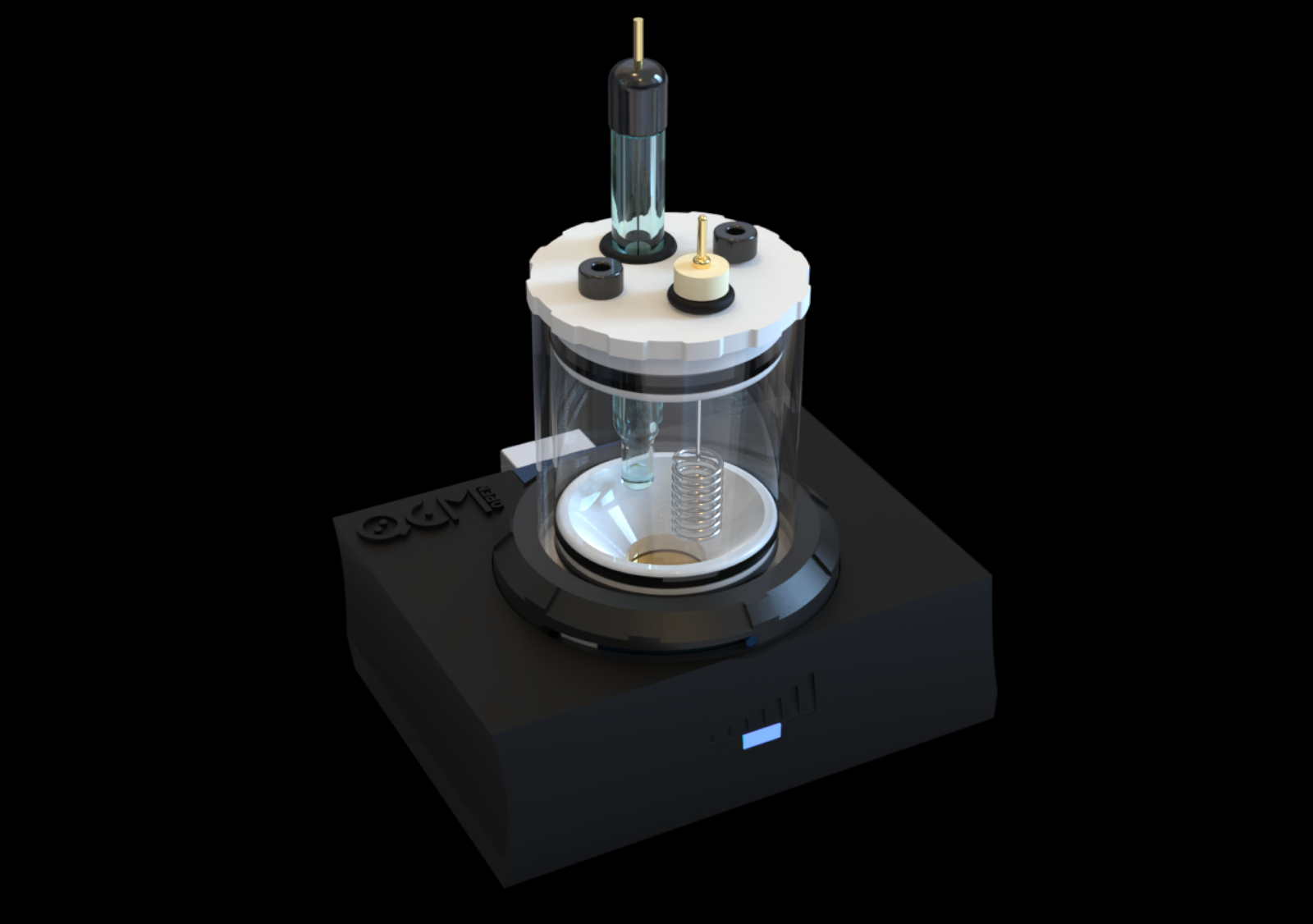openQCM – Powered by Novaetech S.r.l

Scientific Papers
Publications citing the applications of openQCM (by Novaetech S.r.l.) instruments and accessories in scientific research.
The list of scientific papers published on the most important journals showing the usage of openQCM in several scientific fields, such as thin film deposition, chemical sensors, biological research and biosensors.
Because of the large number of publications, we are reorganizing everything by subject areas. This will take some time. Thank you for your patience
2025
Dedecker, Kevin; Drobek, Martin; Julbe, Anne
π-Quadrupole-driven gate-opening in ZIFs for selective VOC capture Journal Article
In: Adsorption, vol. 31, no. 7, pp. 96, 2025.
Abstract | Links | BibTeX | Tags: Adsorption, benzene, Hexafluorobenzene, openQCM, Volatile organic compounds, ZIF, Π-hole
@article{dedecker2025pi,
title = {π-Quadrupole-driven gate-opening in ZIFs for selective VOC capture},
author = {Kevin Dedecker and Martin Drobek and Anne Julbe},
url = {https://link.springer.com/article/10.1007/s10450-025-00654-z#citeas},
doi = {https://doi.org/10.1007/s10450-025-00654-z},
year = {2025},
date = {2025-09-26},
urldate = {2025-01-01},
journal = {Adsorption},
volume = {31},
number = {7},
pages = {96},
publisher = {Springer},
abstract = {The selective capture of volatile organic compounds (VOCs) is a significant challenge in environmental remediation. In this study, we explore how MOF structural flexibility and the electronic properties of VOCs influence their adsorption by comparing two functionalized zeolitic imidazolate frameworks: the flexible ZIF-8_CH3 and the rigid ZIF-8_Br. Using benzene and hexafluorobenzene as probe molecules with contrasting quadrupole moments, we demonstrate that ligand functionalization significantly impacts both structural dynamics and adsorption/separation performance. ZIF-8_CH3 exhibits higher overall uptake capacities, reaching up to 7.3 mmol/g for hexafluorobenzene. In contrast, ZIF-8_Br shows superior separation capabilities, with IAST selectivity values reaching 17.1 for benzene/hexafluorobenzene mixtures at low pressures. Our experimental and computational analyses reveal that aromatics with negative quadrupole moments more readily appear to trigger the gate-opening phenomenon, establishing a potential correlation direct correlation between electron density distribution and molecular sieving efficiency. These findings offer new insights into the rational design of functionalized frameworks for selective VOC capture, highlighting the crucial role of electronic effects in determining host-guest interactions and separation performance.},
keywords = {Adsorption, benzene, Hexafluorobenzene, openQCM, Volatile organic compounds, ZIF, Π-hole},
pubstate = {published},
tppubtype = {article}
}
The selective capture of volatile organic compounds (VOCs) is a significant challenge in environmental remediation. In this study, we explore how MOF structural flexibility and the electronic properties of VOCs influence their adsorption by comparing two functionalized zeolitic imidazolate frameworks: the flexible ZIF-8_CH3 and the rigid ZIF-8_Br. Using benzene and hexafluorobenzene as probe molecules with contrasting quadrupole moments, we demonstrate that ligand functionalization significantly impacts both structural dynamics and adsorption/separation performance. ZIF-8_CH3 exhibits higher overall uptake capacities, reaching up to 7.3 mmol/g for hexafluorobenzene. In contrast, ZIF-8_Br shows superior separation capabilities, with IAST selectivity values reaching 17.1 for benzene/hexafluorobenzene mixtures at low pressures. Our experimental and computational analyses reveal that aromatics with negative quadrupole moments more readily appear to trigger the gate-opening phenomenon, establishing a potential correlation direct correlation between electron density distribution and molecular sieving efficiency. These findings offer new insights into the rational design of functionalized frameworks for selective VOC capture, highlighting the crucial role of electronic effects in determining host-guest interactions and separation performance.
2024
Dedecker, Kevin; Drobek, Martin; Julbe, Anne
In: RSC Applied Interfaces, 2024.
Abstract | Links | BibTeX | Tags: Adsorption, benzene, cyclohexane, hydrocarbons, n-hexane, openQCM, QCM, Quartz Crystal Microbalance
@article{dedecker2025selective,
title = {Selective Adsorption and Separation of C 6 Hydrocarbons: The Role of Structural Flexibility and Functionalization in Zeolitic Imidazolate Frameworks},
author = {Kevin Dedecker and Martin Drobek and Anne Julbe},
url = {https://pubs.rsc.org/en/content/articlehtml/2025/lf/d4lf00388h},
doi = {https://doi.org/10.1039/D4LF00388H},
year = {2024},
date = {2024-12-19},
urldate = {2024-12-19},
journal = {RSC Applied Interfaces},
publisher = {Royal Society of Chemistry},
abstract = {This study investigates the selective adsorption and separation of C6 hydrocarbons (benzene, cyclohexane, and n-hexane) by zeolitic imidazolate frameworks (ZIFs), focusing on their structural flexibility and functionalization. ZIF-8_CH3 and ZIF-8_Br were synthesized and compared, indicating distinct adsorption behaviors. ZIF-8_CH3 showed higher uptake for benzene (9.5 molecules per unit cell) and n-hexane (8.0 mlc uc−1) compared to cyclohexane (1.0 mlc uc−1). In contrast, ZIF-8_Br exhibited enhanced adsorption for cyclohexane (5.0 mlc uc−1) and reduced n-hexane uptake (0.5 mlc uc−1). Computational simulations supported these findings, identifying the involved host–guest interactions. Ideal adsorbed solution theory analysis confirmed that ZIF-8_CH3 demonstrated virtually zero uptake of cyclohexane from binary mixtures containing either n-hexane or benzene, while ZIF-8_Br exhibited negligible adsorption of n-hexane from its mixtures with cyclohexane or benzene. It was concluded that bromine functionalization in ZIF-8_Br increased structural rigidity and selectivity for aromatic compounds. These results highlight the crucial role of functionalization and gate-opening phenomena in ZIFs to achieve efficient volatile organic compound capture and separation where traditional adsorbents may not be effective.},
keywords = {Adsorption, benzene, cyclohexane, hydrocarbons, n-hexane, openQCM, QCM, Quartz Crystal Microbalance},
pubstate = {published},
tppubtype = {article}
}
This study investigates the selective adsorption and separation of C6 hydrocarbons (benzene, cyclohexane, and n-hexane) by zeolitic imidazolate frameworks (ZIFs), focusing on their structural flexibility and functionalization. ZIF-8_CH3 and ZIF-8_Br were synthesized and compared, indicating distinct adsorption behaviors. ZIF-8_CH3 showed higher uptake for benzene (9.5 molecules per unit cell) and n-hexane (8.0 mlc uc−1) compared to cyclohexane (1.0 mlc uc−1). In contrast, ZIF-8_Br exhibited enhanced adsorption for cyclohexane (5.0 mlc uc−1) and reduced n-hexane uptake (0.5 mlc uc−1). Computational simulations supported these findings, identifying the involved host–guest interactions. Ideal adsorbed solution theory analysis confirmed that ZIF-8_CH3 demonstrated virtually zero uptake of cyclohexane from binary mixtures containing either n-hexane or benzene, while ZIF-8_Br exhibited negligible adsorption of n-hexane from its mixtures with cyclohexane or benzene. It was concluded that bromine functionalization in ZIF-8_Br increased structural rigidity and selectivity for aromatic compounds. These results highlight the crucial role of functionalization and gate-opening phenomena in ZIFs to achieve efficient volatile organic compound capture and separation where traditional adsorbents may not be effective.

